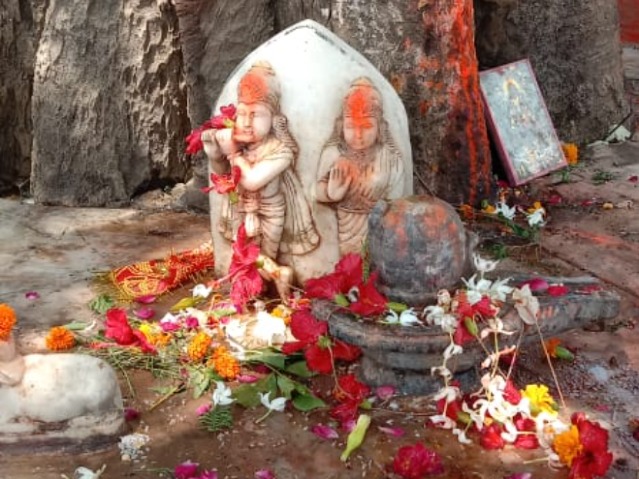Reconfigurations of Hindu temples and Practices in COVID-19

Reconfigurations of Hindu temples and Practices in COVID-19
The pandemic precipitated various changes to religious practices. In the wake of the dynamic changes, several debates were focused on whether religions would hamper the lockdown measures or alternatively serve as a source of psychological support system for devotees. In line with the debate, several reports were published to showcase the strategies of religious leaders for saving religious rituals. On the other hand, few reports would have been devoted to unraveling how devotees altered their practices and any associated religious spaces. A pertinent question of interest is whether devotees found alternative ways to practice their customary rituals during the lockdown periods. An ethnographic-style exploration was conducted in the North Indian city of Prayagraj and neighboring regions during the lockdown period. The exploration yielded two noteworthy findings.
The temporary closure and restricted access to temples meant that people had to look for alternatives to conduct their ritualistic practices in an uninterrupted manner. Consequently, existing roadside shrines received more worshippers during the periods of lockdown (see, Figure 1). For several devotees, the deities of the shrines served as miniature forms of the major Gods, residing in the inaccessible temples.
For the others, the possibility of visiting a wayside shrine culminated in a new deity that was exquisitely tailored to meet the prevailing tensions of the times. As an example, the dwellers of the Shuklapur village in the northern state of Uttar Pradesh, constructed a shrine that was devoted to the ‘Coronavirus Goddess.’ The deity was stationed under a tree and wore a mask like the other villagers. The emergence of the ‘Coronavirus Goddess’ embody theological tensions that were expectedly high during the pandemic. A thorough discussion with devotees in Prayagraj revealed that the incarnation embodies an attempt to accommodate a benevolent image of known Gods, within the broader array of adversities that was triggered by the viral attack. Supporting evidence for the current analyses comes from a recent study that reported relations between higher levels of struggle with God and elevated scores on a Coronavirus Anxiety Scale (Lee, 2000).
In essence, devotees uncovered alternate ways to continue their ritualistic practices. Most remarkably, the alternate ways of coping were tied to the spatial layout of religious landscapes. Similar reports have come in from the city of Lufeng in south China, where people continued to practice their rituals beyond the built temple areas. Residents from the reported city either reconfigured their homes to accommodate shrines, conducted their regular rituals outside the closed temples, or shifted to an e-platform while maintaining contact with monks residing inside inaccessible temples (Chen et al, 2021).
It is plausible to conclude that spatial shifts within religious spaces play a key role in precipitating coping amidst tensions. Future work along these lines will potentially address a few integral issues that hinge upon the importance of built religious spaces. For instance, are sacredness and religiosity tied to physical boundaries? If the answer is yes, then events that interfere with religious rituals could potentially alter the boundaries. Because of the special role that boundaries play in sustaining religious activities and, by implication, religious communities, it may be unsurprising to discover why many faith groups are not willing to permit people to cross them. There are many questions to answer on this scientific expedition.
Selected References
Chen, N., Chen, J., & Dean, K. (2021). Religion in times of crisis: Innovative
lay responses and temporal-spatial reconfigurations of temple rituals in
COVID-19 China. Cultural Geographies, 14744740211020505.
Lee, S. A. (2020). Coronavirus Anxiety Scale: A brief mental health screener
for COVID-19 related anxiety. Death Studies, 44(7), 393-401.
Appendix
Figure 1: A Road Side Shrine
About the author
Neha Khetra is an Associate Professor at the Jindal Institute of Behavioural Sciences. She is broadly interested in the interaction of ecology and religion.
Divya Bhatia is an Assistant Professor at the Jindal Institute of Behavioural Sciences and Jindal School of Psychology and Counselling. Her research interests involve assessments of people's risk perception in emergency situations such as Covid-19 and the neuroscientific basis of religion.

